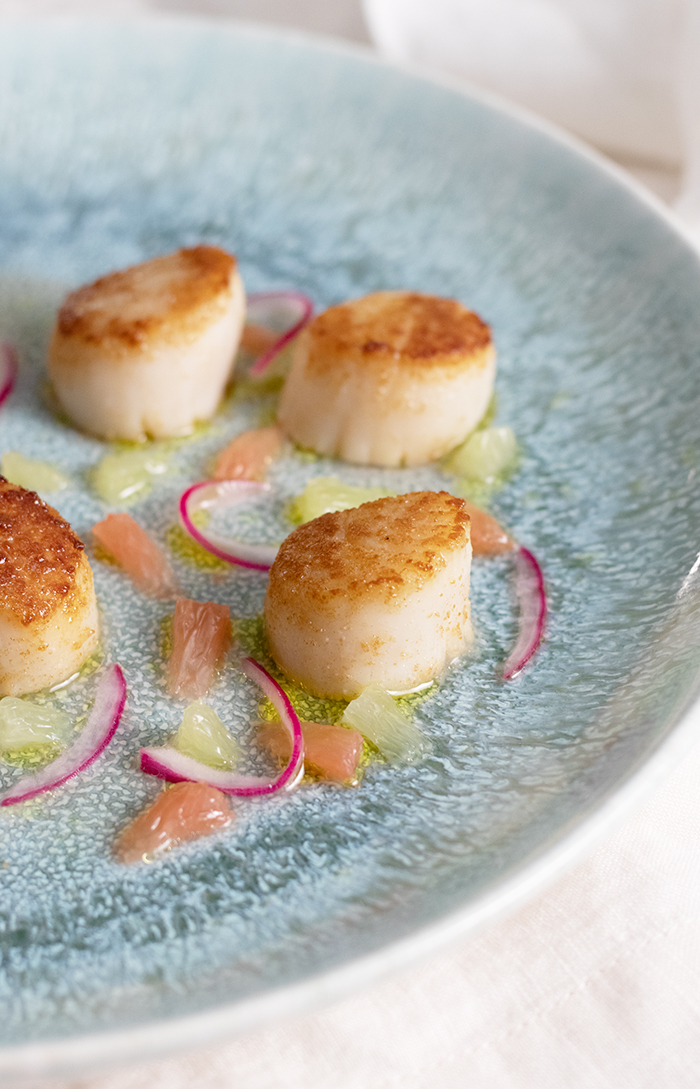Why eat seafood?

Kate Sherwood - CSPI.
Why do health experts recommend eating seafood once or twice a week? Among the reasons:
1. You’re in good company.
In studies that track thousands of people for years or decades, frequent seafood eaters have a lower risk of heart attacks and strokes. Could something else about their diets help explain their lower risk? Maybe. But if you’re replacing less-healthy foods—like red or processed meats—with seafood, what do you have to lose?
2. Seafood has the right kind of fat.
Swapping foods high in saturated fat (red meat, cheese, butter, coconut oil, etc.) for ones rich in heart-healthy fats (seafood, unsaturated vegetable oils, nuts, avocados, etc.) lowers blood levels of LDL (“bad”) cholesterol. And that cuts the risk of heart disease.
3. Seafood helps protect your blood vessels.
Whether you call it Mediterranean or DASH, a diet rich in seafood, beans, nuts, whole grains, olive oil (or other unsaturated oils), fruits, and vegetables may help lower your blood pressure, which can cut the risk of a stroke or heart attack.
Which types of seafood are best?

Seek out seafood that’s LOW in mercury, HIGH in omega-3 fats, and easier on the planet.
Minimize mercury. The developing nervous system is especially sensitive to mercury, so women who are—or might become—pregnant, breastfeeding mothers, and young children face the greatest risks.
Seafood that’s low in mercury and high in omega-3 fats (like salmon) is a win-win. Use our list to find high- and low-mercury (and omega-3-rich) varieties.
Mind the planet. Look for sustainably caught or farmed varieties at seafoodwatch.org to help stem the tide of overfishing.
Buy quality. Find a fish market or counter that looks clean and smells fresh—like the sea, but not fishy—or with little or no smell.
Keep it cold. Make the seafood counter your last stop while shopping. Keep it in a reusable insulated bag on the way home.
Cook it today. If it’s not frozen, you’ll get the freshest flavor by buying only what you can cook today. If not, pack it with ice, keep it in the coldest part of the fridge (not the freezer), and cook it within a few days. Eat cooked leftovers within 2 or 3 days.
Cook more seafood. If you’re ready to cook—and eat—more seafood, start with a few of our tried-and-true tips for buying and preparing the ocean’s bounty.
Tips for cooking seafood

Lean white fish are the most versatile. They range in texture from delicate (flounder) to meaty (tilapia, cod) and are mild in taste. Most sauces—whether light or rich—work well. So do toasted nuts. Just make sure flavors aren’t so bold (like chiles) that they overwhelm the fish.
Keep it simple for fatty fish. Salmon, char, mackerel, sardines, and other fatty fish don’t need much. A squeeze of lemon and (maybe) a pinch of salt is often all it takes to bring out their flavor.
Bright or herby is a go-to. Some flavors work well with just about any fish. Think tomatoes (fresh or canned), citrus juice and zest, or soft herbs (like dill, chives, cilantro, or tarragon).
Don’t overcook. That’s easier said than done. Your best bet: low and slow. Poaching or slow roasting at a low temperature lengthens the runway between done and overcooked.
That’s why gently poaching fish in a flavorful liquid just about guarantees a perfect outcome—juicy, tasty fillets. Bonus: you also get vegetables and a delicious sauce, all in one pan. Tip: Is your fish almost done? Don’t be shy. Look to see if it’s no longer translucent. Peek between the layers with a paring knife. Or test a corner with a fork; as soon as the fish flakes, it’s done.
Want to make things easy on yourself?
Try a pouch or can of already-cooked salmon. They’re on our list of 5 underrated foods and our list of “new standbys”—healthy staples that can wait patiently in your pantry until you’re ready for them. They’re winners because pouches or cans almost always hold wild salmon (pink or sockeye) that has often been sustainably caught.
Second, fatty fish like salmon can help protect your heart. They’re rich in polyunsaturated omega-3 fats. You get 300 to 600 milligrams of EPA + DHA omega-3 fats in a 2½ oz. pouch. Bonus: you also get around 15 grams of protein and 50 to 75 percent of a day’s vitamin D, which is rare to find in foods.
And pouches are quick and easy (no draining!). Simply mix with vegetables (celery, scallions, cherry tomatoes), fresh herbs (parsley or dill), and a light dressing (olive oil and fresh lemon juice). Serve on a salad or with whole-wheat toast or crackers.
Photos: Kate Sherwood/CSPI.

The latest
Our best (free) healthy tips
Our free Healthy Tips newsletter offers a peek at what Nutrition Action subscribers get—scrupulously researched advice about food of all kinds, staying healthy with diet and exercise, and more.




